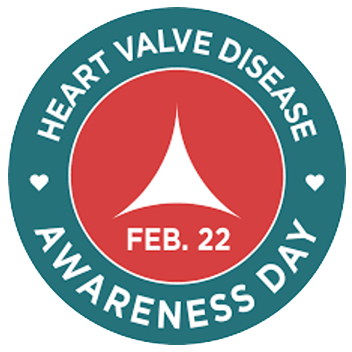The New Puzzle Piece: Tricuspid Edge-to-Edge Repair
 As part of American Heart Month, and in recognition of National Heart Valve Disease Awareness Day on Feb. 22, the ACC Interventional Section has written a series of articles focused on valvular heart disease, including the role of imaging modalities, emerging trends in transcatheter mitral valve replacement and tricuspid valve repair, and perspectives on novel applications of transcatheter aortic valve replacement. See the entire series on the Invasive CV Angiography and Intervention and Valvular Heart Disease Clinical Topic Collections. For patient resources, check out CardioSmart's Heart Valve Disease Hub and new "Heart Valve Disease Treatment with TAVR" infographic.
As part of American Heart Month, and in recognition of National Heart Valve Disease Awareness Day on Feb. 22, the ACC Interventional Section has written a series of articles focused on valvular heart disease, including the role of imaging modalities, emerging trends in transcatheter mitral valve replacement and tricuspid valve repair, and perspectives on novel applications of transcatheter aortic valve replacement. See the entire series on the Invasive CV Angiography and Intervention and Valvular Heart Disease Clinical Topic Collections. For patient resources, check out CardioSmart's Heart Valve Disease Hub and new "Heart Valve Disease Treatment with TAVR" infographic.Tricuspid valve regurgitation (TR) is often forgotten, but now there is renewed interest in the subject. Better physiological understanding and advances in technique have led to a promising future.1-6 TR can be classified as due to primary or functional valve disease. The conventional treatment in the past was surgical, but surgical mortality for lone tricuspid valve disease is still high compared with other valve surgery.
Recently, several percutaneous tricuspid valve repair options have become available. Most popular is transcatheter tricuspid edge-to-edge repair.7-11 Recent trials showed that it is feasible, with a high safety profile in patients who are high risk. Most importantly, the results have shown a dramatic improvement in heart failure symptoms and recurrent admission for heart failure.12
The procedure has been done in many centers in North America and Europe. Led by Prince Sultan Cardiac Center, the procedure was introduced in the Middle East during 2019. One example is the case of a 77-year-old woman with many comorbidities who underwent a successful transcatheter tricuspid edge-to-edge repair procedure. The case first went through the heart valve team, which is the cornerstone of any successful program, and her symptoms and surgical risk were discussed at length. A transesophageal echocardiogram was performed, which is also an important screening tool to inform the patient's treatment eligibility, and it was favorable. Her coaptation gap was less than 7 mm, and the regurgitation jet was central and anteroseptal in origin. Once these selection criteria were obtained, the procedure could be done in our patient with a very high success rate (Figures 1-3).
Figure 1: Severe TR Before the Clip
Figure 2: Fluoroscopy Image After Clip Deployment
Figure 3: Mild TR After the Clip
This patient showed excellent results post-procedure; on follow-up, she demonstrated dramatic improvement in her symptoms from New York Heart Association Class III-IV to Class I.
New devices are becoming available or are currently under investigation. These include TriClip (Abbott Structural Heart; Santa Clara, CA), which will be launched later this year, whose initial results are promising. Other devices using coaptation-based strategies include PASCAL (Edwards Lifesciences LLC; Irvine, CA) and FORMA (Edwards Lifesciences LLC; Irvine, CA) systems. Finally, there are several early experimental devices that still need further evaluation before they are available for clinical application.
The future is promising now that the tricuspid valve is no longer forgotten.
References
- Rogers JH, Bolling SF. The tricuspid valve: current perspective and evolving management of tricuspid regurgitation. Circulation 2009;119:2718-25.
- Shah PM, Raney AA. Tricuspid valve disease. Curr Probl Cardiol 2008;33:47-84.
- Najib MQ, Vinales KL, Vittala SS, Challa S, Lee HR, Chaliki HP. Predictors for the development of severe tricuspid regurgitation with anatomically normal valve in patients with atrial fibrillation. Echocardiography 2012;29:140-6.
- Kwak JJ, Kim YJ, Kim MK, et al. Development of tricuspid regurgitation late after left-sided valve surgery: a single-center experience with long-term echocardiographic examinations. Am Heart J 2008;155:732-7.
- Nath J, Foster E, Heidenreich PA. Impact of tricuspid regurgitation on long-term survival. J Am Coll Cardiol 2004;43:405-9.
- Voelkel NF, Quaife RA, Leinwand LA, et al. Right ventricular function and failure: report of a National Heart, Lung, and Blood Institute working group on cellular and molecular mechanisms of right heart failure. Circulation 2006;114:1883-91.
- Bustamante-Labarta M, Perrone S, De La Fuente RL, et al. Right atrial size and tricuspid regurgitation severity predict mortality or transplantation in primary pulmonary hypertension. J Am Soc Echocardiogr 2002;15:1160-4.
- Hung J, Koelling T, Semigran MJ, Dec GW, Levine RA, Di Salvo TG. Usefulness of echocardiographic determined tricuspid regurgitation in predicting event-free survival in severe heart failure secondary to idiopathic-dilated cardiomyopathy or to ischemic cardiomyopathy. Am J Cardiol 1998;82:1301-3.
- Antunes MJ, Barlow JB. Management of tricuspid valve regurgitation. Heart 2007;93:271-6.
- Kilic A, Saha-Chaudhuri P, Rankin JS, Conte JV. Trends and outcomes of tricuspid valve surgery in North America: an analysis of more than 50,000 patients from the Society of Thoracic Surgeons database. Ann Thorac Surg 2013;96:1546-52.
- Beckmann A, Funkat AK, Lewandowski J, et al. Cardiac surgery in Germany during 2012: a report on behalf of the German Society for Thoracic and Cardiovascular Surgery. Thorac Cardiovasc Surg 2014;62:5-17.
- Nickenig G, Weber M, Lurz P, et al. Transcatheter edge-to-edge repair for reduction of tricuspid regurgitation: 6-month outcomes of the TRILUMINATE single-arm study. Lancet 2019;394:2002-11.
Clinical Topics: Cardiac Surgery, Heart Failure and Cardiomyopathies, Invasive Cardiovascular Angiography and Intervention, Noninvasive Imaging, Cardiac Surgery and Heart Failure, Acute Heart Failure, Interventions and Imaging, Interventions and Structural Heart Disease, Angiography, Echocardiography/Ultrasound, Nuclear Imaging
Keywords: Angiography, Tricuspid Valve Insufficiency, Tricuspid Valve, Patient Selection, Follow-Up Studies, Eugenol, Zinc Oxide, Heart Failure, Echocardiography, Transesophageal, Fluoroscopy, Surgical Instruments
< Back to Listings



